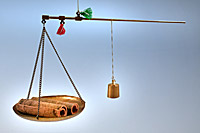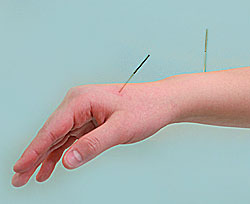

What is acupuncture?
Acupuncture is the practice of inserting extremely fine sterile needles into specific energy points in the body to relieve pain and stress and improve energy flow.
What is Traditional Chinese Medicine?
 Traditional Chinese Medicine (TCM) is a form of healing that has
been used in China for 4000 years. It encompasses a variety of
different treatments including acupuncture, Herbal
Medicine/Supplements, Cupping, Moxabustion, Tui Na/Massage, Gua
Sha/Spooning and Dietary Therapy.
Traditional Chinese Medicine (TCM) is a form of healing that has
been used in China for 4000 years. It encompasses a variety of
different treatments including acupuncture, Herbal
Medicine/Supplements, Cupping, Moxabustion, Tui Na/Massage, Gua
Sha/Spooning and Dietary Therapy.
What is Moxabustion?
Moxabustion is a technique using a special Chinese herb called moxa or mugwort externally on the body. It is burned for a few seconds on or above the skin and/or on top of a needle above the skin at the acupuncture points to activate Qi and blood flow and feels comfortably warm. Moxa can be used to treat a variety of conditions such as pain, menstrual disorders and cramps, asthma, diarrhea and vomiting, and cold or the flu.
What styles of acupuncture does Ding Acupuncture Herb Center practice?
Traditional C
Auricular Acupuncture
Scalp Acupuncture
Five-Element Acupuncture
Japanese Style Acupuncture
How does acupuncture work?
 According to Traditional Chinese Medicine (TCM) theory, a person's
state of health comes form a harmonious balance between the
complementary extremes (yin and yang) of the life force known as Qi
(chi). Qi is believed to flow through pathways (meridians) in a
person's body. The meridians and the energy flow are accessible
through more than 350 acupuncture points which are used in various
combinations for restoring imbalances that lead to illness, pain,
mental disorders, etc. TCM also teaches that acupuncture can heal
each of the five major organs and entrails by treating the meridian
that corresponding to each and that the �spirit� itself can be
balanced by correct treatment.
According to Traditional Chinese Medicine (TCM) theory, a person's
state of health comes form a harmonious balance between the
complementary extremes (yin and yang) of the life force known as Qi
(chi). Qi is believed to flow through pathways (meridians) in a
person's body. The meridians and the energy flow are accessible
through more than 350 acupuncture points which are used in various
combinations for restoring imbalances that lead to illness, pain,
mental disorders, etc. TCM also teaches that acupuncture can heal
each of the five major organs and entrails by treating the meridian
that corresponding to each and that the �spirit� itself can be
balanced by correct treatment.
In contrast, Western medicine explains acupuncture's effectiveness through principles and mechanisms of neuroscience. For example, acupuncture is believed to work at the point of injury or pain by releasing neurotransmitters, allowing for better blood flow and lowered perception of pain. It also increases the release of endorphins (natural painkillers), modulates the central nervous system, and can improve immunity.
Does it hurt?
For most patients acupuncture causes little or no pain and needles are barely felt. The needles are hair thin and do not feel like a hypodermic needle when inserted. Insertion is quick and each patient has a slightly different response, feeling sensations of tingling, warmth, electricity, or heaviness. Some report a mild sting at first, like a mosquito bite and occasionally in the treatment of chronic conditions a throbbing may occur. However, needles can be quickly adjusted to alleviate any discomfort.
Is it safe?
Yes. Acupuncture is an accepted treatment method requiring practitioners to be trained and licensed. The U.S. Food and Drug Administration (FDA) approved acupuncture needles for use by licensed practitioners in 1996. All needles used are new, sterile, and used only one time before disposal. The areas on your body to be treated will be cleaned with alcohol prior to insertion of needles. FDA statistics show that acupuncture related complications are rare and occur mostly from proper procedures not being followed.
How widely is acupuncture used in the United States?
The use of acupuncture has grown in popularity in the US over the last two decades. In 1997 the National Institutes of Health (NIH) stated that acupuncture is being "widely" practiced by thousands of acupuncturists, physicians, dentists, and other practitioners, for relief or prevention of pain and for various other health conditions. The 2002 National Health Interview Survey is the the largest, most comprehensive survey to date, of Complementary and Alternative Medicine (CAM) used by American adults. It reports that an estimated 8.2 million U.S. adults have used acupuncture and that an estimated 2.1 million US adults had used acupuncture in the previous year.
Do you reuse needles?
Never. All needles are used once and then disposed of. They are FDA approved, sterile, and nontoxic.
Is acupuncture good for anything besides pain?
Certainly. Aside from an extensive list of diseases and conditions that it is an appropriate treatment for, acupuncture is also an excellent compliment to most other modalities including Western medicine and pharmaceuticals, herbal therapy, massage therapy, and Chiropractic treatment. It can be effective in the treatment of addictions and can be used to increase the effectiveness of in-vitro fertilization procedures and to speed healing. It can be an extremely effective, drug free, non-surgical treatment for the serious side effects of Cancer treatments, hormone replacement therapies, PMS, and Menopause symptoms. It is particularly effective at treating emotional disorders such as phobias, grief, and anger.
Acupuncture is also good as a preventative measure and for balancing the body's systems and promoting good health and well-being.
What should I expect from my first visit?
Jihong Ding will speak with you and ask about your health condition, lifestyle, and behavior. She will want to obtain a complete picture of behaviors that may contribute to your condition and your treatment needs. Please be prepared to discuss all treatments you have used, medications you are taking, and all known medical conditions you have. Additionally, Dr. Ding may examine your tongue and check your pulse, both of which are important aspects of Traditional Chinese Medicine (TCM).
After your discussion, acupuncturist will provide you with your first treatment which will last 20 to 40 minutes. The entire first visit an hour to an hour and a half.
Why does the acupuncturist check my tongue and pulse?
In Traditional Chinese Medicine (TCM) areas of the tongue relate to
various organ systems in the body. The color, coating, texture, and
shape of those areas provides information about the patient's state
of health. The tongue can show the nature and degree of an
 imbalance and it can act as an indicator to help the health
practitioner gauge the progress of treatments. As an example: a
yellow coating on the tongue indicates internal heat, so appropriate
points would be chosen to clear the heat.
imbalance and it can act as an indicator to help the health
practitioner gauge the progress of treatments. As an example: a
yellow coating on the tongue indicates internal heat, so appropriate
points would be chosen to clear the heat.
A patient's pulse is checked to determine the condition of blood and of Qi (chi), which is the invisible life energy that travels in pathways (meridians) throughout the body. Using pulse diagnosis, a practitioner can determine the health of the internal organs and describe conditions according to Yin and Yang (cold or hot, weak or strong, empty or full, etc.). Pulse diagnosis tells acupuncturists where there are problems with the flow of energy in the body that need to be addressed.
How should I prepare for a treatment?
It is best to wear comfortable, loose fitting clothing that offers easy access to the elbows and knees. Also, have a light meal in advance of your appointment and do not fast or eat a large meal beforehand. Fatigue can compromise the effectiveness of the treatment so be sure to get a good night's sleep prior to your visit.
How often will I receive treatments?
The number of treatments vary with the nature of the patient's condition and responsiveness to treatment and that can affect the required frequency of office visits. Typically, weekly sessions are advised although some acute conditions may require treatments more often, like 2-3 times per week. Acupuncture has a cumulative effect so when a patient's symptoms improve, the time interval may increase to once every two weeks and eventually once a month or less for health �maintenance�. Acupuncturist will suggest a strategy as part of your first visit.
How long does a treatment session last?
A typical session lasts about a half hour but may vary depending upon the specific treatment requirements and nature of the patient's condition.
What can I expect after a treatment session?
Many patients feel a sense of peacefulness and relaxation during and after a treatment. Some feel energetic, revitalized, or euphoric. However, up to one third of patients may experience an increase in or exacerbation of symptoms, even tiredness after the initial one or two treatments. Some patients feel a remaining sensation near acupuncture points like soreness or numbness, but that usually only lasts a matter of hours.
The time it takes to notice benefits from acupuncture treatments vary with the individual. In general, patients begin to feel the benefits of acupuncture in 2-3 treatments. If the patient is treated for an acute problem, they may notice improvement after just one session. If the problem is chronic or long term, it may take many treatments to begin to feel benefits.
Does insurance cover acupuncture?
Always check with your insurance provider before starting treatment to determine if acupuncture is covered and to what extent, for your specific condition. As a Complementary and Alternative Medicine (CAM) therapy, acupuncture is a more commonly covered alternative modality.